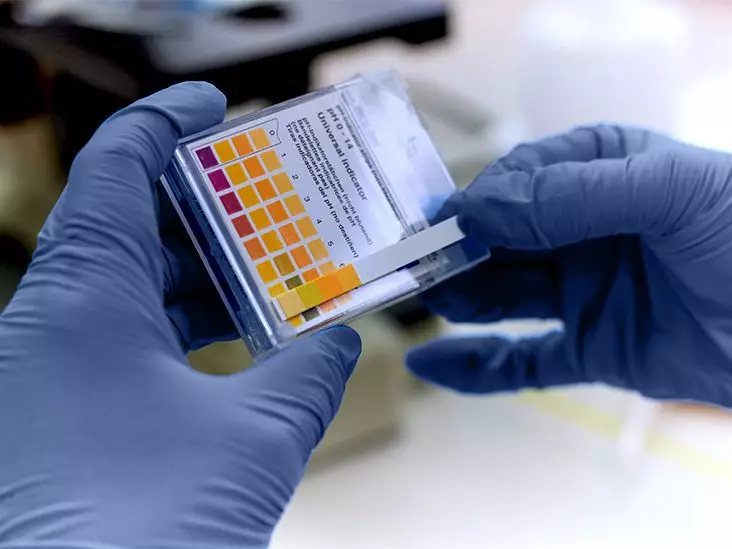Prostate cancer holds the notorious distinction of being one of the most common cancers among men, yet it reveals a paradox: it is also one of the most treatable cancers when diagnosed in its nascent stages. Despite these potential outcomes, early detection remains a critical hurdle due to the absence of robust biomarkers that could signal the onset of the disease reliably. Age is a significant risk factor, with the likelihood of diagnosis increasing for men as they get older. However, the challenge persists: how do we improve early detection when existing biomarkers prove inconsistent?
Researchers have made significant strides in addressing this issue through a groundbreaking study published in *Cancer Research*. These advancements leverage urine-based biomarkers—an alternative approach that might change the future landscape of prostate cancer screening.
Disrupting the Norm: From Blood to Urine Analysis
Traditionally, prostate-specific antigen (PSA) blood tests have been the standard method for prostate cancer diagnosis. PSA levels can indicate the presence of the disease, but these metrics can equally signal other conditions like benign prostatic hyperplasia. This ambiguity has led to numerous unnecessary biopsies and heightened anxiety for patients. Recognizing the shortcomings of current diagnostic models, researchers have directed their efforts towards examining mRNA activity in prostate tumor cells, aiming to unearth biomarkers that could provide more precise insights into the disease.
By employing artificial intelligence in their research, scientists developed intricate digital models that account for the genetic expressions of thousands of individual tumor cells. This innovative combination of genetic analysis and advanced computational techniques enabled the identification of multiple potential urine-based biomarkers capable of accurately detecting both the presence and severity of prostate cancer.
Breaking New Ground with Urine Biomarkers
The findings shared by lead researcher Martin Smelik illuminate the essence of this research—alluding to the fact that these novel urine biomarkers surpassed PSA efficiency. “Analyzing the expression of candidate biomarkers in urine can outperform current blood tests based on PSA,” Smelik states, emphasizing the benefits of non-invasive diagnostics. The simplicity of conducting a urine test, which is virtually painless and considerably less expensive, renders this approach revolutionary.
In tests involving nearly 2,000 patients, the specific urine biomarkers identified showcased great promise in accuracy, setting a new benchmark for prostate cancer detection. But this is merely a starting point; the next phase involves larger-scale clinical trials that will either solidify or challenge the validity of these findings.
The Larger Implications of Urine Testing
Milan Sheth, MD, who was not part of the study but commented on its feasibility, affirmed that the move towards urine-based biomarkers is a crucial step forward. “Early diagnosis and treatment are critical for preventing complications,” he states, pointing to the need for improved diagnostic methodologies that spare patients from the discomfort and invasiveness of traditional biopsies.
Sheth further emphasizes that these new urinary biomarkers hold dynamic characteristics—capable of indicating not only cancer presence but also disease severity. The implications are significant: if these tests prove reliable, they could drastically lower the number of painful and unnecessary invasive procedures, thereby improving patient quality of life.
A Future Beyond Prostate Cancer
The excitement surrounding these findings extends beyond prostate cancer alone. The researchers believe that methodologies similar to those used in this study may apply broadly to other cancer types, sparking a new wave of diagnostic innovation. Ramkishen Narayanan, MD, a board-certified urologist, echoed this sentiment when he acknowledged the urgent need for more biomarkers to complement the longstanding PSA benchmark.
“Serum PSA has dominated the scene for nearly 50 years—we are overdue for additional biomarkers,” Narayanan remarked. His insights underline a frustration felt by many health professionals: the dire need for innovative diagnostics that genuinely reflect the complexity of cancer.
He pointed out the relationship between urine and the prostate, as urine serves as a vital indicator due to its proximity to prostate cancer cells. An ongoing theme in cancer research is leveraging local biological materials, and urine is positioned well for this purpose.
The Road Ahead
As researchers move forward, collaborations and comprehensive studies will be essential in validating the preliminary findings. Efforts to adopt these breakthroughs into wider clinical practice must be robust, centered on patient needs, and focused on ensuring that these innovations provide real, tangible benefits.
This new frontier in prostate cancer diagnosis demonstrates a potential sea change in how we think about and approach cancer detection methods. Through the harnessing of genetic data, artificial intelligence, and non-invasive testing, we might be on the cusp of a paradigm shift that transcends traditional boundaries and redefines what is possible in early cancer detection.

